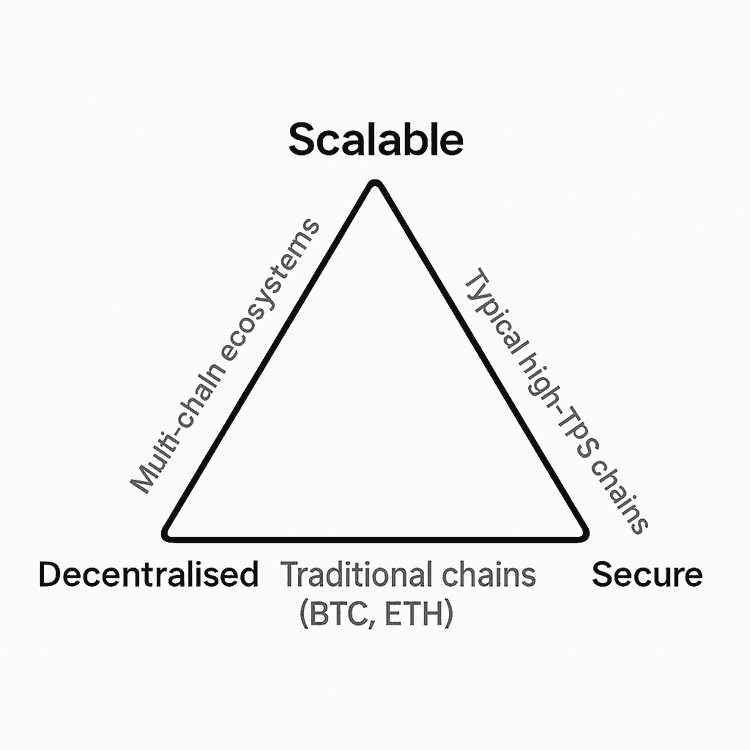Will Blockchain Redefine the Future of Internet Privacy?


Internet privacy has become paramount in an era where digital footprints are meticulously tracked and personal data is commodified. Traditional centralized systems often leave users vulnerable to data breaches and unauthorized surveillance. Enter blockchain technology, a decentralized framework promising enhanced security, transparency, and user autonomy. But can blockchain truly redefine the landscape of internet privacy?
Understanding the Role of Blockchain in Internet Privacy
Blockchain is more than just the foundation for cryptocurrencies, it’s a transformative technology with implications for how personal data is handled online. By decentralizing control and enhancing security, blockchain offers a new model for digital privacy. This section explores how blockchain's core features directly contribute to a more secure and private online experience.
How Blockchain Enhances Data Security and Transparency
Blockchain operates on a decentralized ledger system, where each transaction is recorded across multiple nodes, ensuring data integrity and resistance to tampering. This structure inherently provides enhanced data security, as there's no single point of failure. Moreover, the transparency of blockchain allows users to verify transactions without compromising personal information, striking a balance between openness and privacy. By eliminating intermediaries, blockchain reduces the risk of data misuse, granting users greater control over their information.
"Privacy is not an option, and it shouldn't be the price we accept for just getting on the Internet." — Gary Kovacs.
Key Blockchain Applications Improving Online Privacy
Beyond theoretical advantages, blockchain is already being implemented in practical ways to safeguard online privacy. From digital identity to secure messaging, innovative applications are emerging that leverage blockchain’s decentralized structure. In this section, we examine specific use cases that demonstrate how blockchain is actively reshaping privacy standards.
Decentralized Identity Systems and User Control
Traditional identity systems often require users to share extensive personal information, stored on centralized servers susceptible to breaches. Decentralized Identity (DID) systems leverage blockchain to allow individuals to create and manage their digital identities without relying on a central authority. Users can share only the necessary credentials, preserving privacy and reducing exposure to data theft. This user-centric approach empowers individuals with greater control over their data, fostering trust in digital interactions.
Blockchain-Based Messaging and Communication Platforms
Secure communication is a cornerstone of internet privacy. Blockchain-based messaging apps, such as Session and Wispr, utilize decentralized networks to offer end-to-end encryption without central servers. This architecture ensures that messages are not stored in a single location, minimizing the risk of unauthorized access. Additionally, these platforms often require minimal personal information to register, further enhancing user anonymity and protecting communication privacy.
Challenges Blockchain Faces in Reshaping Internet Privacy
While blockchain holds transformative potential for enhancing digital privacy, several deep-rooted architectural, technical, and regulatory obstacles stand in the way of mass adoption. These challenges stem from blockchain’s inherent design principles, such as immutability, transparency, and decentralization, which often clash with privacy laws, usability needs, and scalability requirements. Understanding and addressing these limitations is crucial to deploying blockchain as a privacy-preserving solution at scale.
Immutability vs. Data Erasure Requirements
Blockchain’s core strength, its immutability, creates legal and ethical tensions with modern data privacy regulations that mandate the right to erasure.

Scalability and Performance Constraints
Blockchain's decentralization and security mechanisms limit transaction throughput and increase latency, challenging its ability to support real-time, privacy-focused applications at scale.

Usability and Cryptographic Key Management
Effective privacy on the blockchain requires secure cryptographic key management, a task that remains too technical and risky for most non-expert users.
Metadata Leakage and Network Layer Vulnerabilities
Even when transaction content is encrypted, metadata, such as timestamps, wallet addresses, and network paths, can be analyzed to compromise user anonymity.
Regulatory and Compliance Ambiguity
The lack of global regulatory consensus on blockchain and data privacy introduces legal uncertainty, making it difficult to design systems that are both decentralized and compliant.
Conclusion
Blockchain technology holds significant potential to transform internet privacy by offering decentralized, secure, and transparent solutions. Users can regain control over their data through applications like decentralized identity systems and secure communication platforms. However, to fully realise this potential, challenges such as regulatory compliance, scalability, and user accessibility must be addressed. As the digital landscape continues to evolve, integrating blockchain into privacy strategies could be a pivotal step toward a more secure and user-centric internet.
Resouces
Frequently asked questions
Check out most commonly asked questions, addressed based on community needs. Can't find what you are looking for?
Contact us, our friendly support helps!
How does blockchain improve internet privacy?
Blockchain enhances internet privacy by decentralizing data storage, reducing reliance on central authorities that can be vulnerable to breaches. Its transparent yet secure framework allows users to control their personal information and verify transactions without exposing sensitive data.
What are decentralized identity systems?
Decentralized identity systems enable users to create and manage their digital identities without a central authority. By using blockchain, individuals can share only necessary credentials, maintaining privacy and reducing the risk of identity theft.
Are blockchain-based messaging apps more secure than traditional ones?
Blockchain-based messaging apps offer enhanced security by eliminating central servers, reducing the risk of data breaches. They often provide end-to-end encryption and require minimal personal information, offering greater privacy compared to traditional messaging platforms.




